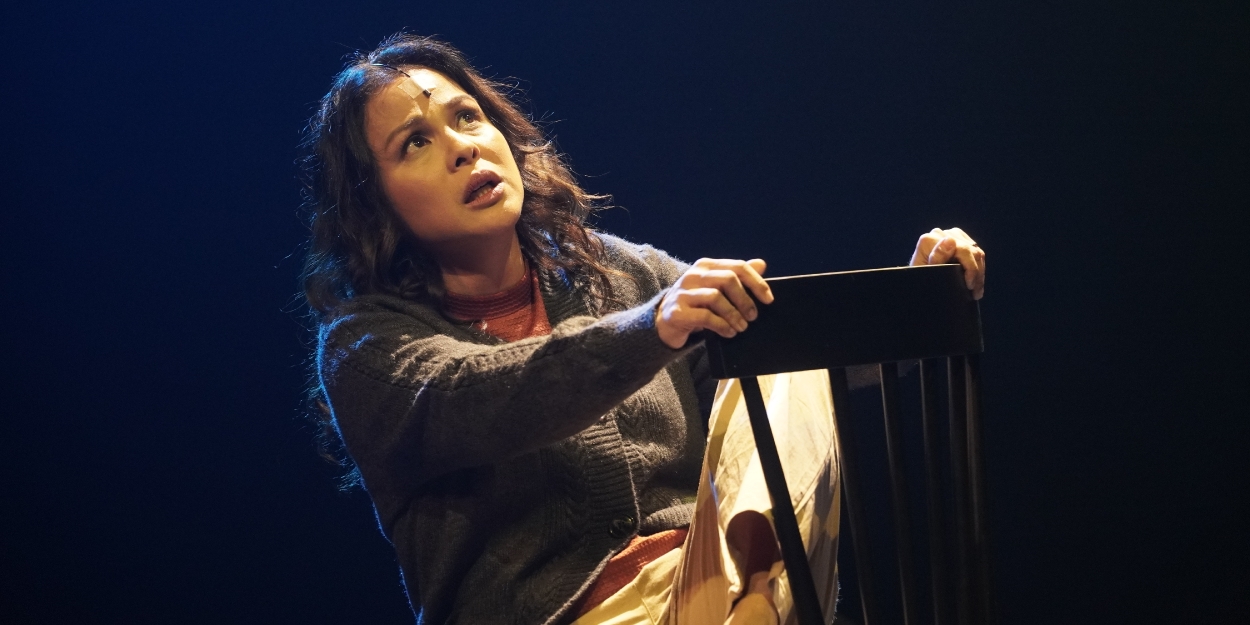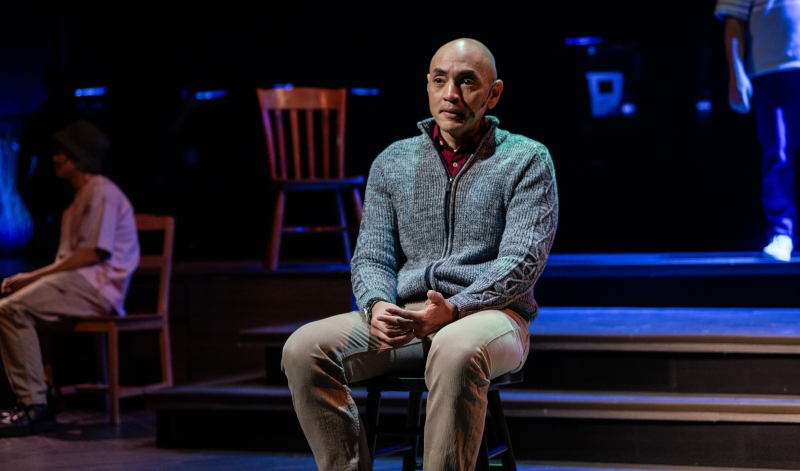Review: NEXT TO NORMAL Breaks Your Heart Into Pieces
‘Next To Normal’ closes at the Power Mac Center Spotlight, Circuit Makati, this weekend.

Manila, Philippines--Mental health a few years back wasn't something very alarming, but due to high rates of depression, anxiety, and suicide, it has become more and more a growing concern. In 2025, the staging of the 2008 American rock musical “Next to Normal” (with book and lyrics by Brian Yorkey and music by Tom Kitt) is indeed a timely move by The Sandbox Collective.
This local production, directed by Toff de Venecia, is one for the books since its staging is a scaled-down version of the traditionally visual effects-laden production it’s known for.
The story centers on a mother, Diana Goodman, who struggles with worsening bipolar disorder and how her illness is affecting her family.
Simplistic, but Cathartic
“Next to Normal,” which won the 2010 Pulitzer Prize for Drama, is a theatrical piece that’s well-written and structured.
This edition is simplistic as its producers choose to tell the story of a dysfunctional family through the continual movements of chairs, which seem to be acting along with the two sets of cast members.
The challenge is how the audience would imagine their situations while the story progresses as the characters tell their respective stories.
Frankly, to those expecting an aesthetically pleasing set design, it does not have one. It's how the imagination would let the viewers understand deeply what the chairs merely represent--as inanimate objects, its essence of a form like Plato tried to explain once. The energy or the soul it embodies.
 Foreground: Jef Flores plays Dr. Madden; Shiela Valderrama, Diana.
Foreground: Jef Flores plays Dr. Madden; Shiela Valderrama, Diana.
The chairs could remind the audience of memories about anything that matters to human beings. Remember Plato's contribution to the world of thought--The Theory of Ideal Forms? Each movement or position of the chairs onstage would aid in explaining how things come to be as they are: the order of the universe, how we come to know things, how we make mistakes, and how we should live our lives. And that's what the Goodmans are circling, trying to navigate things amid such oppression within their family.
With almost the barest elements onstage, the actors connect with the spectators (the receiver of the message) in the most cathartic way.
Actors as Extensions of Truths
The assemblage of equally stirring performances is undeniably seen in the two Dianas, played by Shiela Valderrama-Martinez and Nikki Valdez-Garcia. Each shows their strengths in painting what's going on in the head of someone with bipolar disorder.
The former, a much-seasoned stage actress, perfectly sings her lines; she moves her viewers with a powerful narration of Diana's unstable condition through subtexts (recognizing the deeper meaning behind her lines and the character's actions). On the other hand, the latter manages to approach her character through “emotional availability.” The Dianas prove they aren't just the central characters but the show's lead stars.
OJ Mariano is Diana's husband, Dan, and the father of Gabe and Natalie, who fits the role to a T. His acting isn’t trying to upstage the lead. His moment when he sings “I Am the One,” a reprise, he breaks down but acknowledges his illness--his grief. It’s a scene that strikes the chord of acceptance (without being too theatrical), but there's silence and stillness in him, punctuated by his subtle sobbing.
 OJ Mariano plays Dan.
OJ Mariano plays Dan.
Jef Flores, Drs. Fine and Madden, stands out. Yet, Dr. Madden, Diana's primary psychiatrist, is much of a rockstar and suits him well. He’s a natural onstage. Despite his recommendation for electroconvulsive therapy (ECT), he succeeds in expressing his concern for his patient's well-being and shows frustrations over the limitations of treatment options.
For the younger actors, those who portray Gabe, Natalie, and Henry--Benedix Ramos, Jam Binay, and Davy Narciso--pull off their singing and acting convincingly. Given the poor acoustics in the venue, the three young actors enunciate every text in their songs, not allowing themselves to be swallowed by the loud orchestra. Ramos has great promise of making a name for himself in this field.
As actors, they are extensions of what their characters try to reflect--their truths as humans.
A Timeless Piece
Given the musical's theme, it's something noteworthy to stage today.
It addresses grief, depression, suicide, drug abuse, ethics in modern psychiatry, and the underbelly of suburban life.
Though the Goodmans meet a devastating fate as a family, the show closes with a plea for hope. The finale song, “Let There Be Light,” sung by Diana, Dan, Natalie, Gabe, Henry, and Dr. Madden, sums up the need to tell a story surrounding mental health.
“Next to Normal” is a powerful vehicle to spark conversations, and educate the public to be more understanding and accepting of those who struggle with such conditions. Humans must realize that bodies can mislead us, the senses can confuse us, and our perceptions cannot always be trusted. Thus, there’s a need to view things with better understanding and with professional assistance.
“Next to Normal” is heartbreaking, as well as an awakening.
And there's truth to Hans Selye's words, “It’s not stress that kills us, it’s our reaction to it.”
Photos: Lance Bersamina, Loreta Arroyo
Reader Reviews

Videos

